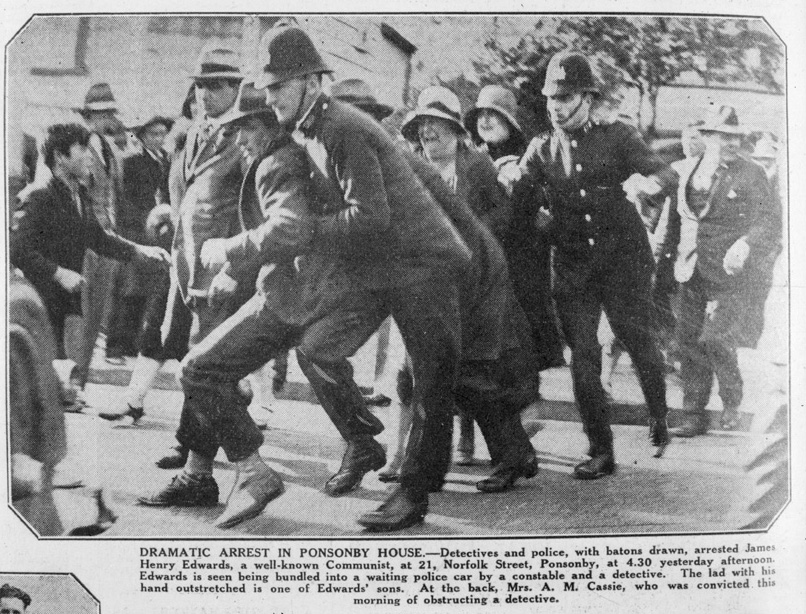Dairy farmers are hurting, the newspapers say, and politicians are lining up left and right to give them a helping hand. Labour says 25 percent of farmers could face losing their farms, but Mr Key said he was told it would be closer to 5 to 10 percent.
Agriculture consultant Peter Fraser told Radio New Zealand a soft landing was not possible.
“We’re not looking at a hard landing … we missed that a number of years ago as well.
“We are looking at a crash landing and the issue is how many passengers will get out.
Farmers have already been given interest-free loans from Fonterra and the government pumps millions into holding their hand through hard times with the Rural Support Trusts. Now John Key is promising millions more in free irrigation – sucking dry our waterways to keep dairy exports high – but Labour says that’s not enough. If we do not give them even more free money “our” land will be sold to foreigners – meaning Asians of course, not white people like James Cameron or the British or Dutch.
But these are crocodile tears because what is happening is merely market forces at work – the smaller farmers will be eaten by the bigger farmers, as has been happening since New Zealand was settled. You would have to be callous not to feel for the lower order sharemilkers and the like, who have slogged away for years in the hope of climbing the greasy pole. They are victims of a pyramid scheme who are likely to suffer a rude awakening from the dairy dream.
The number of farms in New Zealand has been falling for the last half century, most dramatically after subsidies were removed in the 1980s. In just 10 years, from 2002-2012, the number of farms fell from about 70,000 to 57,000. Between 1990 and 2009 the combined area of dairy farms almost doubled from 1.3 million hectares to 2.2 million hectares . . . but the number of dairy farms fell. Because large “farmers” increasingly own more than one property and employ sharemilkers, managers and farm workers to do the actual farming, the concentration of ownership is likely to be much greater. Farming in New Zealand is a cutthroat capitalist business and always has been.
Aotearoa was settled by land-hungry former peasants for the most part, dispossessed in the British Isles by vicious ruling class land theft. Between 1770 and 1830 about 6 million acres of common land were “enclosed” in England. Owning a farm was the dream for most of immigrants – although the state made sure they paid dearly for the land – and the purpose of New Zealand was to feed Britain. New Zealand has no peasants and never did. That’s the main reason our “farmers markets” are mostly pretty fake.
Farming here has always been for the capitalist market. The first frozen meat shipment to England in 1880 changed the face of the country. Unlike almost all advanced industrialised countries, where agriculture comes second to city-based manufacturing, New Zealand has depended on agriculture. Farmers boast they create some 60% of New Zealand’s wealth, which is a joke. It takes an industrial army of rural contractors, shearers, freezing workers, train and truck drivers, and port workers (to name just a few) to make agriculture pay.
And dairying has always been a poor deal for working class New Zealanders. The farmers who rake off the biggest profits are not everyday Kiwis – they are multimillionaires and have been for decades. In the heyday of sheep farming, strong unions in shearing, rail, the works and the ports ensured the wealth created on the land was shared around. That’s not the case with dairying, even though it demands more electricity and water and damages the soil more than sheep farming. Most farm workers and Fonterra truck drivers are not unionised. And while the factories are, the Dairy Workers Union has no traditions of class solidarity or fighting for better pay – but this can change.
It is not impossible to imagine the Dairy Workers Union overcoming the conservative, small-town attitudes of the dairy factory workers to reach out to the dairy farm workers – especially migrant workers who are otherwise isolated and at the mercy of the farmer, who is usually their employer and their landlord. The shearers’ and the meatworkers’ unions were not created by the government. They were built from the ground up, and they won lasting gains for all working people.
But crying crocodile tears for a class of small (and not-so-small) capitalists won’t help anyone. Owner-operator farmers are being judged and sentenced by the market logic they embrace and worship. As a group, farmers have never stood by working class New Zealanders, more often found beating up strikers and protesters alongside the cops than helping out. We owe them nothing.
Indeed, agriculture has always been a collective effort involving far more people than just the farmers. The state-owned company LandCorp and iwi-owned farms offer two different models of ownership. As the farm-owning class shrinks and the farm labouring class grows, then the stage is set for revolution not just in the cities, but on the land as well.








